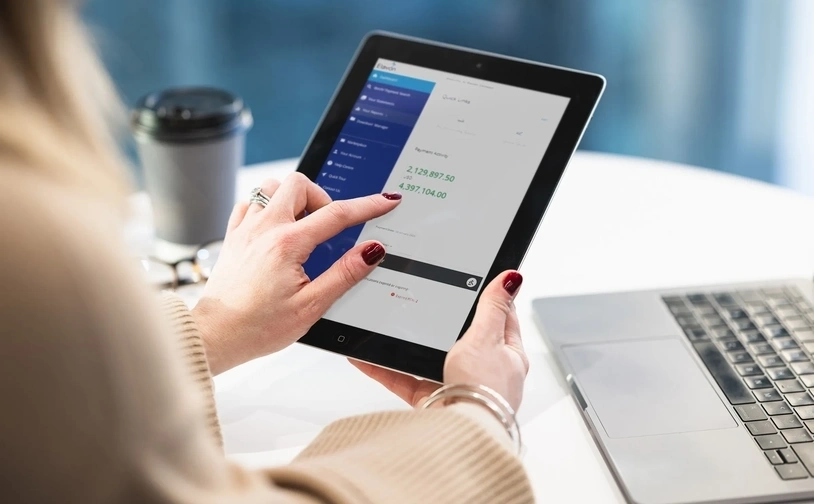Offering finance options such as buy-now-pay-later (BNPL) or paying in instalments can encourage higher-value purchases. Pay-by-instalment schemes such as Klarna, AfterPay and Sezzle can also be useful for encouraging higher order values, as they can reduce the perceived cost of the item, encouraging customers to buy more.
- Optimised web design: make browsing a breeze
- Speed demons: fast loading times to turn clicks into cash
- Mobile mastery: optimising for on-the-go shoppers
- Boost your average order value: easy wins for bigger profits
- The art of the checkout: simple steps to more sales
- Sell more with smart strategies: upselling and cross-selling
- Conversion magic: turning visitors into buyers
- Optimised web design: make browsing a breeze
- Speed demons: fast loading times to turn clicks into cash
- Mobile mastery: optimising for on-the-go shoppers
- Boost your average order value: easy wins for bigger profits
- The art of the checkout: simple steps to more sales
- Sell more with smart strategies: upselling and cross-selling
- Conversion magic: turning visitors into buyers
How to increase your online average order value
The world of ecommerce is a competitive place. It can be expensive to produce marketing campaigns to reach more customers and increase sales. So why not consider ways to maximise the revenue you’re generating from your existing customer base? That’s where understanding average order value can help.
Average order value (AOV) is the amount of money each customer spends in one transaction at your store. The higher your AOV, the higher your revenue per customer. It can be a useful statistic to understand how your store is performing. You can calculate your store’s AOV using the formula:
AOV = total revenue / total number of transactions
You can also use tools such as Google Analytics to track it over time. Increasing your AOV can be an easy, sustainable way to increase revenue from customers you already have.
Benefits of increasing AOV
Increasing your AOV can directly contribute to increasing your business sales revenue. This can be achieved through making higher value transactions, as well as by improving customer experience, encouraging customer loyalty and making the most of your existing website traffic. By optimising your mobile checkout, your ecommerce store could benefit.
Your customers may already trust your products and your brand.
So, introducing features to increase AOV, such as loyalty programmes and flexible returns policies, can allow your customers to feel more valued, driving up AOV while allowing you to strengthen your customer relationships.
Encouraging higher basket values can also streamline your dispatch and shipping processes, making them more efficient and reducing shipping costs.
Additionally, many methods of increasing AOV can, in time, decrease the need for marketing campaigns to reach more potential customers. Making the most of the traffic that your website is already getting can reduce your marketing expenses, while increasing your sales revenue and widening your profit margins.
“Businesses might well have attracted new online customers over
the past few years and understandably want to keep them. Increasing wallet share can be a cheaper, more efficient and therefore a more profitable strategy for boosting revenue than attempting to expand overall market share.”
Peter Charmant, Head of Corporate Retail, Elavon Europe
Ten ways to increase AOV online
When you optimise your website for smartphones, loading times greatly decrease. This is because pictures and text will automatically render at the correct resolutions.
Recommending products that are relevant to your customers’ taste can be an effective way to encourage higher basket values. Not only does it add an element of personalisation, but it encourages customers to view more items or to buy complementary items together. Consider adding cross-selling features such as ‘Customers also viewed’ or ‘We thought you might like’ to your product pages.
Personalised product recommendations drive revenue. Visits where a shopper clicked a recommendation comprise just 7% of all visits, but 24% of orders and 26% of revenue.
Cross-selling and up-selling typically increase the basket size of a transaction, helping to make the customer ‘stickier’. And ‘sticky’ customers tend to stay with the brand.
Cross-selling suggests buying related products – for example, suggesting a particular top that goes with a pair of jeans.
Up-selling encourages customers to spend more on a product, either because it’s higher quality or in a bigger quantity. For example, offering a ‘starter pack’ containing all the essentials for camping may encourage a customer new to camping to buy this pack rather than fewer individual items that are cheaper. Creating a list of comparisons between differently priced products is a popular method of upselling.
Implementing prompts for free shipping or discount thresholds, such as ‘Spend £10 more for free delivery’ or ‘Spend an extra £15 to get 10% off’, can encourage customers to increase their order value to reach that threshold. Increasingly, online businesses include a calculator that tells customers how much more to spend before getting an additional benefit. Invariably, the extra spend tends to be more than the gap to be closed.
Creating a loyalty programme where customers can earn points or discounts relating to the amount they spend at your store can be an easy way to encourage higher purchases. Loyalty programmes are also a great way to develop customer relationships with your brand and encourage repeat sales.
Offering discounts or free gifts with certain orders within a short time frame can encourage higher basket values by creating a sense of urgency. This method can be easily implemented across your site using bold banners, countdowns or your social media.
Shoppers may make bolder or higher value purchases if they can be assured that, should they need to, they can return items quickly and easily. Offering a pay-after-delivery product on your website can also encourage a higher basket value, as customers feel they have the option to try before they buy, with the understanding that it’s risk-free.
Creating bundles of related items is similar to cross-selling. Bundles are typically a selection of related products offered as one complete set, such as ‘starter packs’ or ‘essentials’ bundles. Offering bundles can save customers time while also encouraging them to make higher- value purchases.
Using a pop-up on your landing page can help catch the attention of first-time buyers. Many first-time visitors to your shop may not trust your brand, and therefore need additional encouragement to complete a purchase. Offering discounts can be a good first step to building trust. They also encourage new customers to spend more to save more.
“Not only is adding BNPL to your ecommerce site making your business more attractive, we know it also encourages shoppers to spend more with you. The ability to spread the cost of big-ticket items across several months, potentially without any additional expense, is a real draw to shoppers.”
James King, Head of Professional Services, Elavon Europe
Price optimisation techniques and tips
According to figures, the average company spends just six hours on their pricing strategy throughout the lifespan of the business. If you fail to put in the effort to optimise your pricing decisions, this can have a detrimental effect on your business.
To put it simply, price optimisation is using mathematical analysis to work out how to price a product or a service – and understanding how products will sell quickly at the right price and time, while still making a decent profit.
Companies (B2B and B2C) use a price optimisation formula based on factors such as: demand for their product, competition, historical prices and sales, and the cost of manufacturing goods.
The best price point is where companies can best meet their objectives, whether that means increased profit margins, customer growth or a mixture of both.
Price-optimisation models can be used to tailor pricing for customer segments by simulating how targeted customers will respond to price changes with data-driven scenarios. Given the complexity of pricing thousands of items in highly dynamic market conditions, modelling results and insights helps to forecast demand, develop pricing and promotion strategies, control inventory levels and improve customer satisfaction.
To optimise pricing, you need to collect and analyse your data, both qualitative and quantitative. Ultimately, this is the only way to find out how much your customers will pay for a product or service you offer. It allows you to break free from that guessing-game cycle. Quantitative data – such as transactional data, customer reviews, and supply-and- demand data – show you how you’re doing and what needs to be changed.
Qualitative data is about speaking to your customers, either via surveys or phone. Ask them what they may like or dislike about your product, or the benefits they value, for example. To work on your own website’s price optimisation, you would:

Understanding your target audience is of huge benefit to your business. Look at the different personas and how much they’re willing to pay different prices for your products or services. This will then help you put a price on what you offer, creating tiers and the most appropriate packages for each customer persona.
Each tier should be priced along with your value metric (essentially what and how you’re charging for your product) and should align with your different buyer personas, so that you’re offering the right amount of product or service to each customer grouping.

Understanding your target audience is of huge benefit to your business. Look at the different personas and how much they’re willing to pay different prices for your products or services. This will then help you put a price on what you offer, creating tiers and the most appropriate packages for each customer persona.
Each tier should be priced along with your value metric (essentially what and how you’re charging for your product) and should align with your different buyer personas, so that you’re offering the right amount of product or service to each customer grouping.
Conclusion
Taking steps to increase your AOV could be a simple way to increase revenue and help your business to grow. Many of the methods for increasing AOV also target improving the customer experience on your ecommerce shop – which can, in turn, improve your customer relationships and encourage repeat sales.





